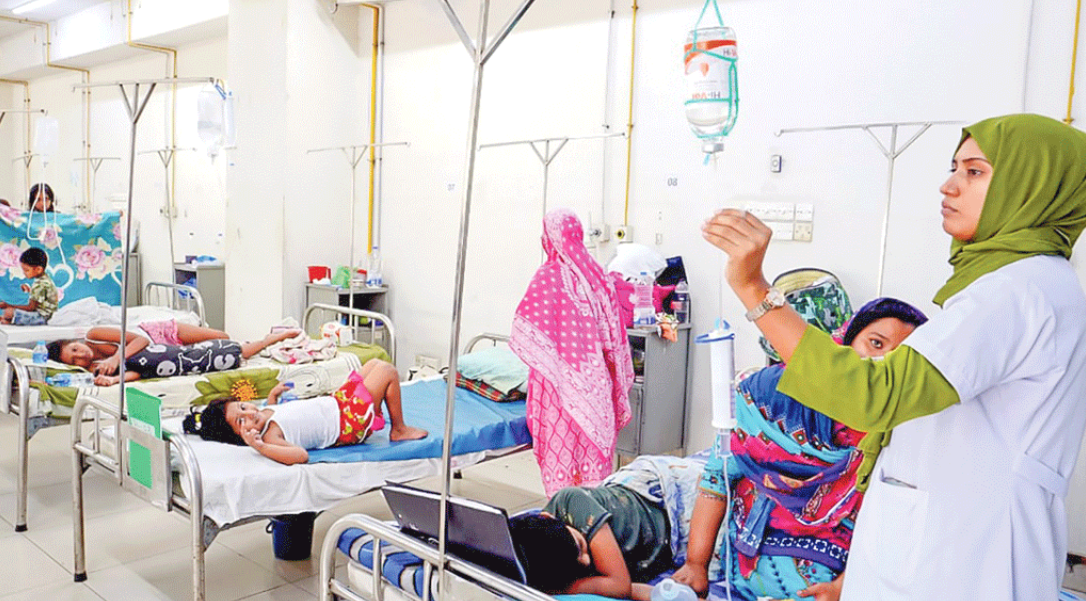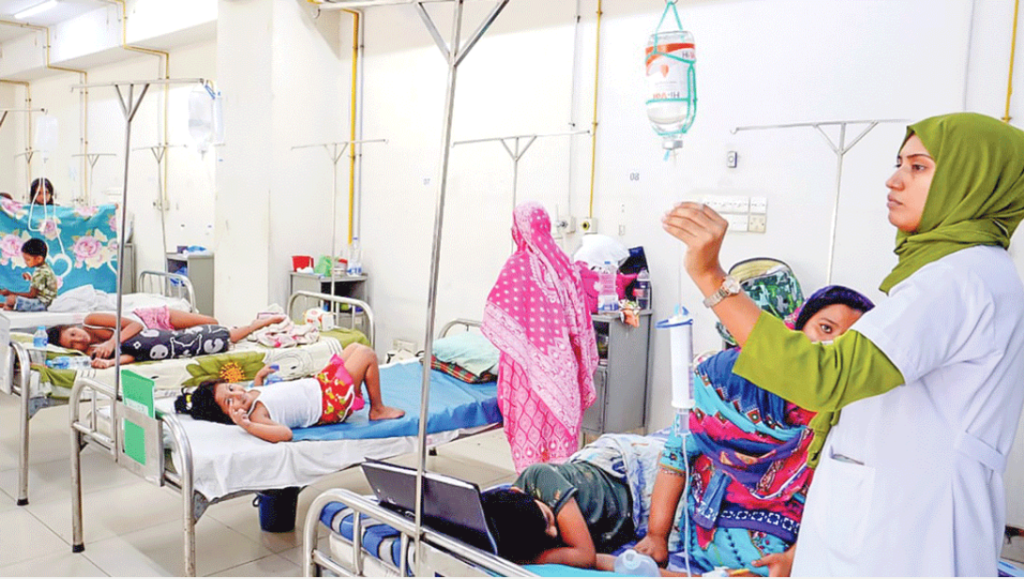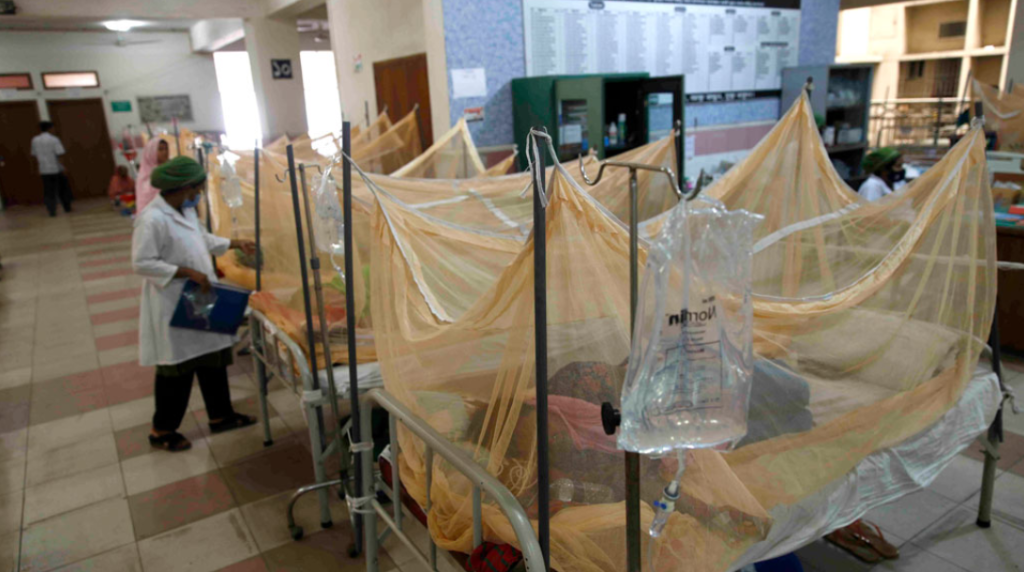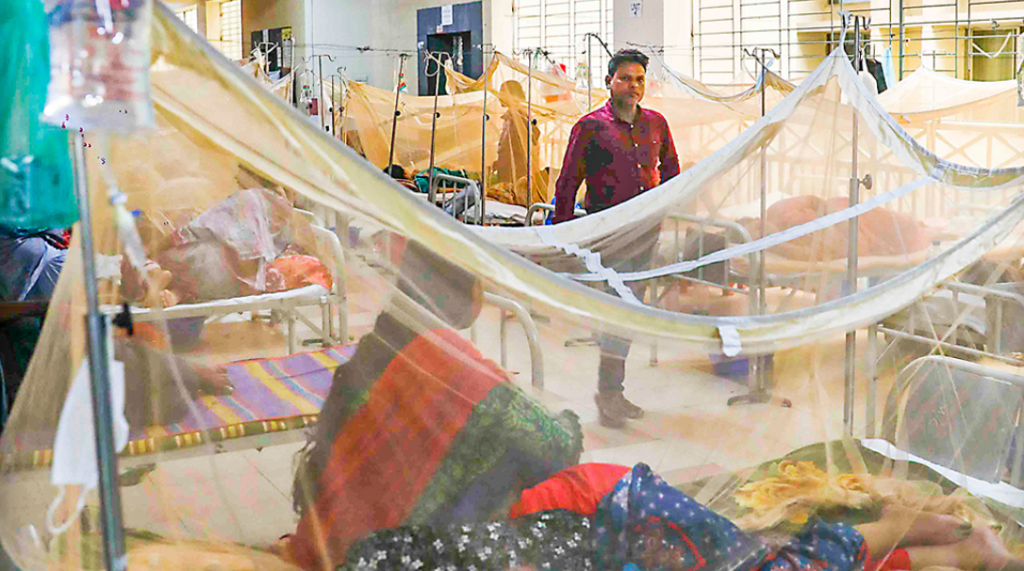Desk Report:
The Aedes mosquito-borne dengue virus has become a major public health concern in the country. Initially, its spread was mainly limited to urban areas, but in the last five years, it has spread more or less throughout the country. According to experts, the only way to reduce the number of patients and deaths is through effective prevention and proper management in the absence of an effective vaccine in the public domain worldwide. But although the disease is a serious public health concern, the government has not yet been able to go beyond the traditional system to prevent it.
Dengue virus disease has long been a serious threat to public health in different countries of the world. The world’s first dengue epidemic was recorded in Philadelphia, USA, in 1780. In the 1950s, its infection spread widely in Thailand and the Philippines in Southeast Asia. In South Asia, dengue patients were identified in Kolkata, India, in 1963 and in Dhaka in 1964. At that time, the disease was locally called ‘Dhaka Fever’. In Bangladesh, official data on dengue began to be stored since 2000. This has made the disease particularly important in the country. But even after this long period, an efficient and effective management has not been developed to combat dengue.
According to government data, the level of dengue infection and the number of deaths have fluctuated at different times in the country. Initially, it was mainly limited to Dhaka metropolis, but in 2019 it spread to other cities and villages. Between 2000 and 2005, 19,500 patients were hospitalized in the country and 222 people died. Gradually, at one stage, the number of dengue patients and deaths increased significantly. Between 2016 and 2020, 1.25 million patients were hospitalized and 231 people died. The highest infection rate in the country so far occurred in 2023. That year, 3.25 million patients were hospitalized and 1,705 people died. In 2024, more than 100,000 patients were hospitalized and 575 people died. From the beginning of this year to September 23, 182 people have died. During this time, more than 43,000 patients were hospitalized across the country. At least 3,326 people have died of dengue in the country in the last two and a half decades.
According to the Department of Health, the dengue statistics being published in the country are based on data from a few specific hospitals. As a result, the number of patients who seek treatment at home or are not even aware of having dengue is not included in this. According to experts, the actual number of dengue patients in the country may be 10 times higher than the official count.
Dengue has spread across the country in recent years, making it a major public health concern nationally. Epidemiology and public health experts have commented that the failure of a country to reduce the death rate from a disease for a long time means that there is a shortage of patients and disease management. Mosquito control is an important part of the dengue control program. Experts say that without understanding the life cycle of the Aedes mosquito, simply fogging is not effective. It is very important to apply insecticides and monitor the places where mosquitoes lay their eggs.
Professor Md. Golam Charowar, Head of the Entomology Department of the National Institute of Prevention and Social Medicine (NIPSUM), said that before killing mosquitoes, it is necessary to understand their life cycle, reproduction and location. Due to poor sanitation and water management, mosquito breeding grounds are increasing. Just fogging will not be effective in repelling mosquitoes. Again, if the same type of insecticide is used for a long time, mosquitoes develop resistance to it. If the situation is not monitored after applying the medicine, its effectiveness cannot be understood.
Entomologist Md. Golam Charowar said that it is very important to identify the patient and his location (contact tracing) to eliminate mosquitoes in that area to prevent dengue. But since this is not coordinated with mosquito eradication, mosquitoes survive and reproduce in the area where the patient is infected. This makes dengue control more complicated.
Professor Dr. Abu Jamil Faisal, President (Elector) of the Public Health Association of Bangladesh, said that there has been a lack of coordinated initiatives from the beginning. Although the responsibility for dengue prevention lies with the local government department, their activities are mainly limited to fogging. There is no effective surveillance of patients. If the number of patients increases, deaths will also increase. Therefore, a coordinated effort must be made to reduce the number of patients. Dengue control is not possible without public awareness and involvement.
Dr. Mushtaq Hossain, advisor and former chief scientific officer of the government’s Institute of Epidemiology, Disease Control and Research (IEDCR), has urged the government to declare dengue a public health emergency. He told Ajker newspaper, “The government is still not taking conventional steps to control dengue. If it is declared an emergency, there will be no tendency to avoid responsibility and it will be possible to work in a coordinated manner. We have a Covid model in front of us. There will be no problem in allocating funds for this.” Dr. Mushtaq said that it is important to utilize primary health centers for testing. Observable patients should be kept in secondary health centers and those who are critical should be quickly sent to the tertiary level. Surveillance of patients, Aedes larvae and pesticides is not being done in a coordinated manner. There is also no region-based epidemiological surveillance. The mortality rate in dengue in Bangladesh is now among the highest in the world. Countries that have been able to reduce mortality rates have given importance to pathology.




